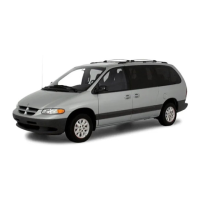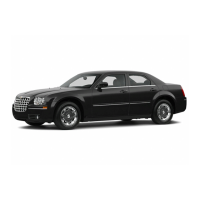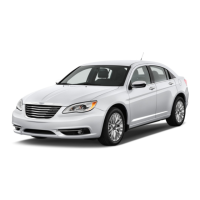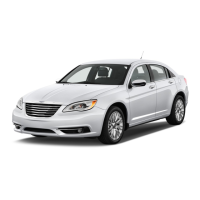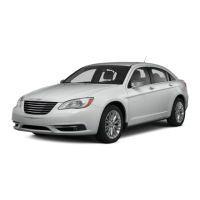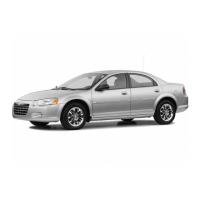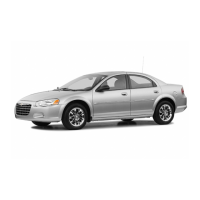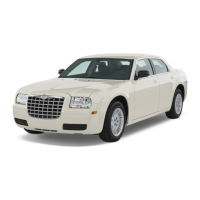column and at the lower edge of the instrument
panel.
(3) Turn the ignition key to ON position. Exit vehi-
cle with scan tool. Use the latest version of the
proper cartridge.
(4) After checking that no one is inside the vehicle,
connect the battery negative remote terminal.
(5) Using the DRB lllt scan tool, read and record
active diagnostic code data.
(6) Read and record any stored diagnostic codes.
(7) Refer to the Passive Restraint Diagnostic Pro-
cedures Manual if any diagnostic codes are found in
Step 5 or Step 6.
(8) Erase stored diagnostic codes if there are no
active diagnostic codes. If problems remain, diagnos-
tic codes will not erase. Refer to the Passive
Restraint Diagnostic Test Manual to diagnose the
problem. If airbag warning lamp either fails to
light, or goes on and stays on, there is a system
malfunction. Refer to the proper Body Diagnos-
tic Procedures Manual to diagnose the problem.
SERVICE PROCEDURES
CLEANUP PROCEDURE
Roll or fold the passenger airbag towards the
instrument panel surface and tuck into instrument
panel into module area. Then tape the ripped instru-
ment panel pad over the deployed airbag.
Use a vacuum cleaner to remove any residual pow-
der from the vehicle interior. Work from the outside
in to avoid kneeling or sitting in a contaminated
area. Vacuum the heater and A/C outlets as well (Fig.
5). If the heater or air conditioner was in RECIRC
mode at time of airbag deployment, operate blower
motor on low speed and vacuum powder residue
expelled from the heater and A/C outlets. Multiple
vacuum cleaning may be necessary to decontaminate
the interior of the vehicle.
Place the deployed driver and passenger airbag
modules along with the instrument panel and center
duct in your automotive scrap.
SERVICE OF DEPLOYED AIRBAG MODULE
DRIVER AIRBAG
After a Driver Airbag Module has been deployed
due to a collision, the following must be replaced:
• Driver Airbag Module
• Clockspring Assembly
• Steering Wheel
• Complete Steering Column Assembly with
shrouds and Lower Steering Column Coupler
The component above must be replaced because
they cannot be reused. Other driver airbag system
components are replaced if damaged.
PASSENGER AIRBAG
After a Passenger Airbag Module has been
deployed due to a collision. the following must be
replaced:
• Passenger Airbag Module
• Instrument Panel and Pad Assembly
The components above must be replaced because of
visible or non visible structural damage.
Any other components should be replaced if dam-
aged.
HANDLING AIRBAG MODULE
DEPLOYED MODULE
The vehicle interior may contain a very small
amount of potassium hydroxide powder, a by-product
of airbag deployment. Sodium hydroxide powder can
irritate the skin, eyes, nose and throat. Wear safety
glasses, rubber gloves, and long sleeved clothing
Fig. 4 Negative Battery Cable Remote Terminal
1 – RIGHT STRUT TOWER
2 – AIR CLEANER INLET TUBE
3 – REMOTE TERMINAL
Fig. 5 Vacuum Heater and A/C Outlets
LH PASSIVE RESTRAINT SYSTEMS 8M - 3
DIAGNOSIS AND TESTING (Continued)
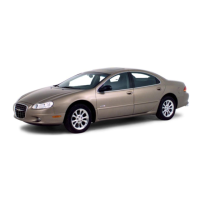
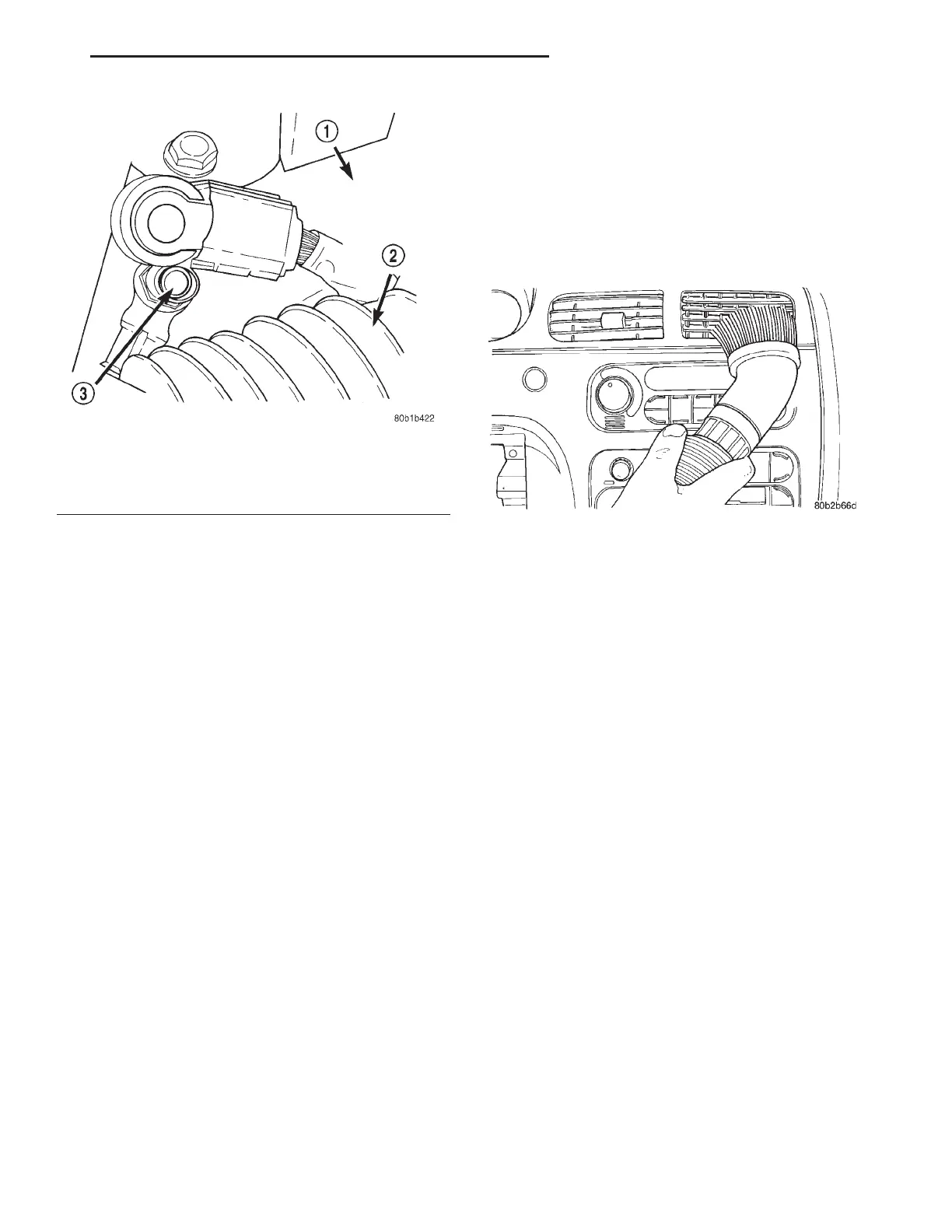